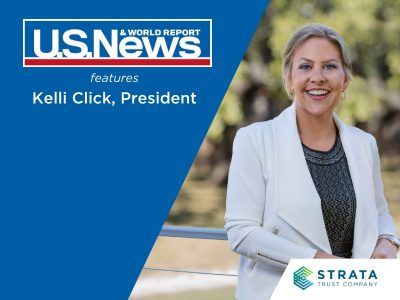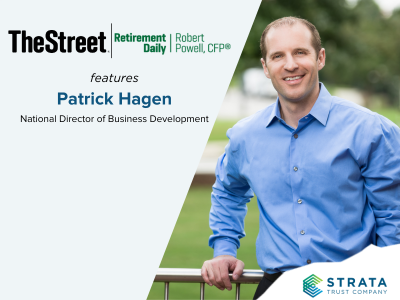As the “Great Wealth Transfer” is set to begin, the investment landscape is bound to see major changes as Millennials, as well as members of Generation Z and Generation X, grow their own assets and inherit family wealth from parents and grandparents. A Cerulli report titled U.S. High-Net-Worth and Ultra-High-Net-Worth Markets 2021 projects that approximately $84 trillion will be transferred through 2045. This represents the largest intergenerational wealth transfer in history. Savvy advisors have been anticipating this massive shift in wealth for years and stand ready to adapt their businesses. To maximize the opportunity for your practice as these changes take hold, it’s important to take stock of what we already know about the money mindsets, risk appetites, and investment interests of younger generations.
1. Understand How Generational Investing Perspectives Will Impact Decisions
 To really understand their generational views, we must acknowledge the economic environments in which Gen Z-ers (ranging in age from 12 to 26), Millennials (ages 27 to 41) and Gen X-ers (ages 42 to 57) grew up. Their lives have been marked by significant market volatility and recessionary periods, prompting a reasonable level of mistrust in the financial system.
To really understand their generational views, we must acknowledge the economic environments in which Gen Z-ers (ranging in age from 12 to 26), Millennials (ages 27 to 41) and Gen X-ers (ages 42 to 57) grew up. Their lives have been marked by significant market volatility and recessionary periods, prompting a reasonable level of mistrust in the financial system.
The cookie-cutter approach just doesn’t resonate with them. Some may have witnessed their parents living paycheck to paycheck during some or all of their lives. This has often left younger investors wanting little to do with the investment choices their parents made. Instead, they may look to newer options that involve high risk and high reward. You might even find that many of your current clients’ children aren’t interested in investing at all or want to feel empowered with more control over investing decisions than their parents typically had.
Gen Z, Millennials, and Gen X investors are likely skeptical about blindly trusting their parents’ financial advisors. In fact, a Cerulli report titled The $70 Trillion Dollar Opportunity revealed that only 13% of affluent investors polled choose to work with the same financial advisor as their parents, with 88% of respondents saying they never even considered doing so. For younger generations, investment research is often done online. It has never been more accessible to start investing simply by downloading an app and turning to Google for investment insight.
2. Enhance Investor Control Over Investing Decisions

As these generations are so involved in do-it-yourself approaches, they tend to have a better understanding of investing and stronger ties to more modern investment models, which is why alternatives are so attractive to DIY generations. Some options that continue to be quite appealing to them include:
- Private Debt: STRATA’s 2021 Self-Directed IRA Investor Survey Report found that 13% of investors leveraged private debt in their investment portfolios, making it the third-largest alternative asset class. A common term used in this investment class is peer-to-peer lending, which is gaining traction due to its attractive returns for investors seeking higher-yield opportunities.
- Pre-IPO Companies: Investors can dabble in private equity deals in the form of pre-IPO companies without putting their entire portfolio at risk. Some of these investments include environmental, social, and governance (ESG) causes that allow them to put their money toward causes and companies that they believe in while making a profit.
- Real Estate: STRATA’s 2021 Self-Directed IRA Investor Survey Report also revealed that real estate is a popular investment option, finding that investors are more confident in higher returns from structured real estate investments such as REITs, LLCs and LPs. In fact, real estate proved to be a primary investment for almost 22% of account holders, with residential real estate being the most popular option and commercial ranking second. These findings reflect what is being seen nationally in alternative investing. Additionally, the CBRE 2022 U.S. Real Estate Market Outlook expects there will be a boom in commercial real estate this year due to its attractive risk-adjusted returns. These findings speak to increased residential home sales and new construction during the pandemic, and investors are taking advantage of this environment.
Doing things differently is often a key investment philosophy among younger generations. More sustainable options like holding assets in a self-directed IRA provide investors with greater control over their portfolios and can help with diversification.
3. Let Education Lead Your Way
 For many advisors, it can be a major adjustment to transition from speaking with traditional investors who have cautious 60/40 portfolios to talking with younger investors driven by higher risk appetites.
For many advisors, it can be a major adjustment to transition from speaking with traditional investors who have cautious 60/40 portfolios to talking with younger investors driven by higher risk appetites.
The key to connecting with younger audiences and achieving long-term success is understanding their perspectives and motivations while providing ongoing education. Instead of trying to get younger investors to follow in their parents’ footsteps, help and encourage them as they carve their own path to a financially successful future using the tools and resources available to maximize their investments, including self-directed IRAs. Adapting to an education-focused model may be pivotal to the future of your advisory business.
Connect With a Self-Directed IRA Expert
Our team of self-directed IRA experts are ready to help alternative investors, advisors, and investment sponsors navigate alternative investing through self-directed IRAs. Interested in hearing more about how a self-directed IRA might be an appealing option for your clients? Contact us today to get started.
















